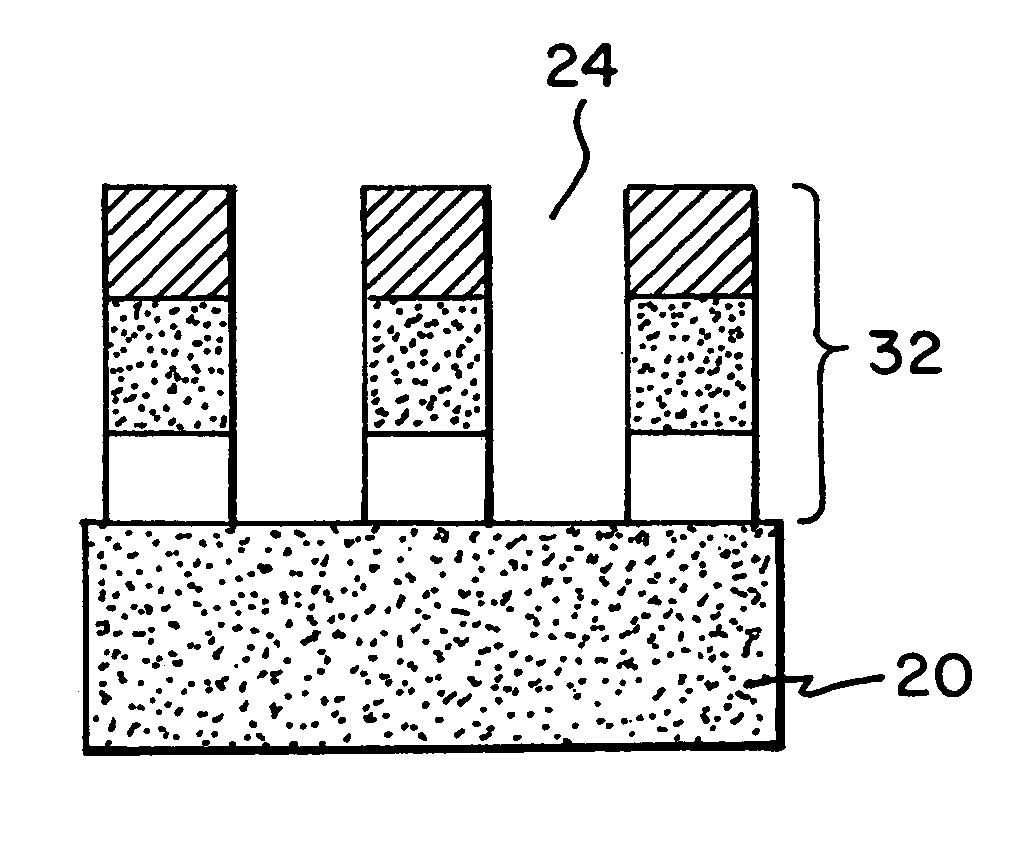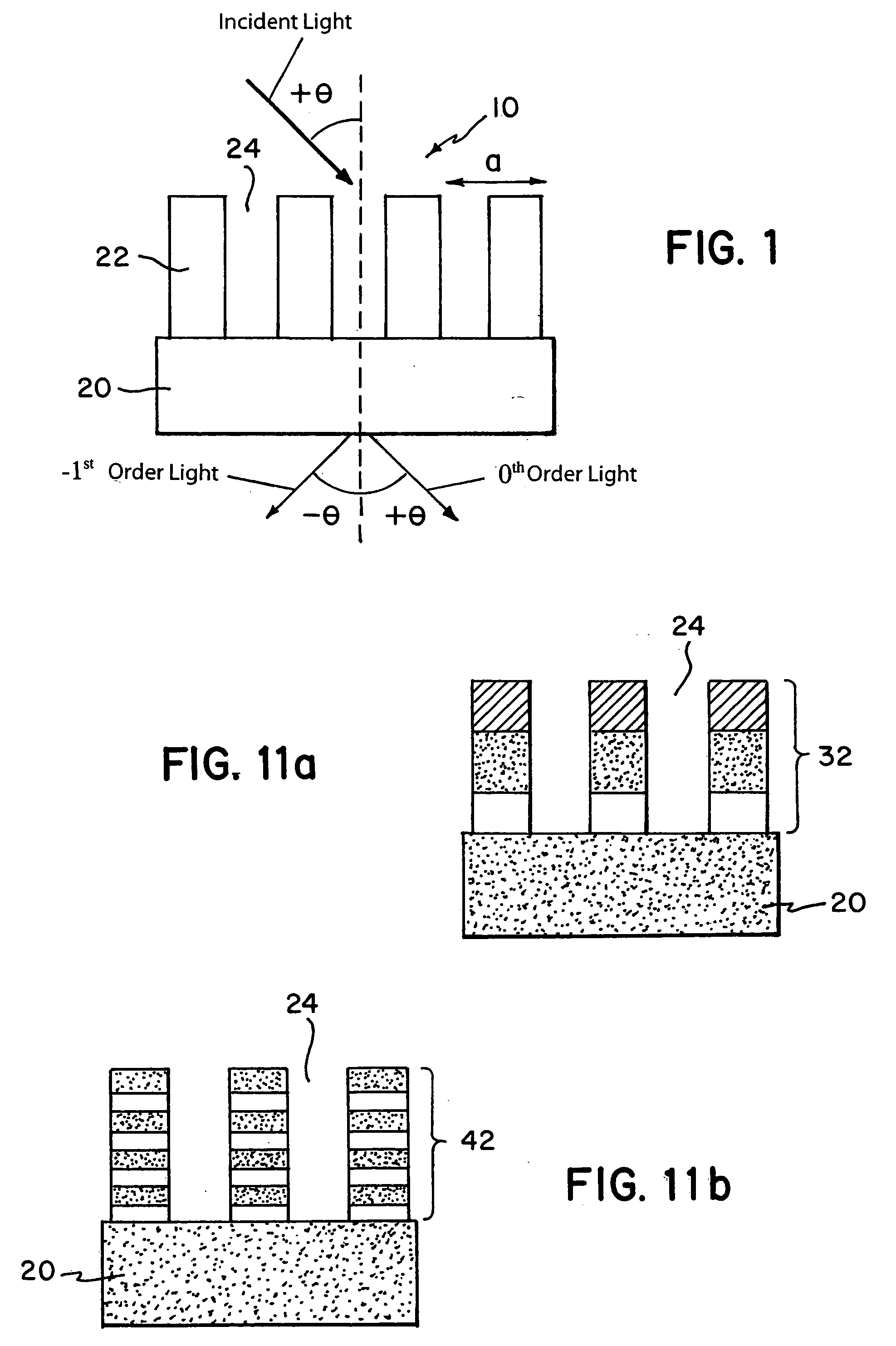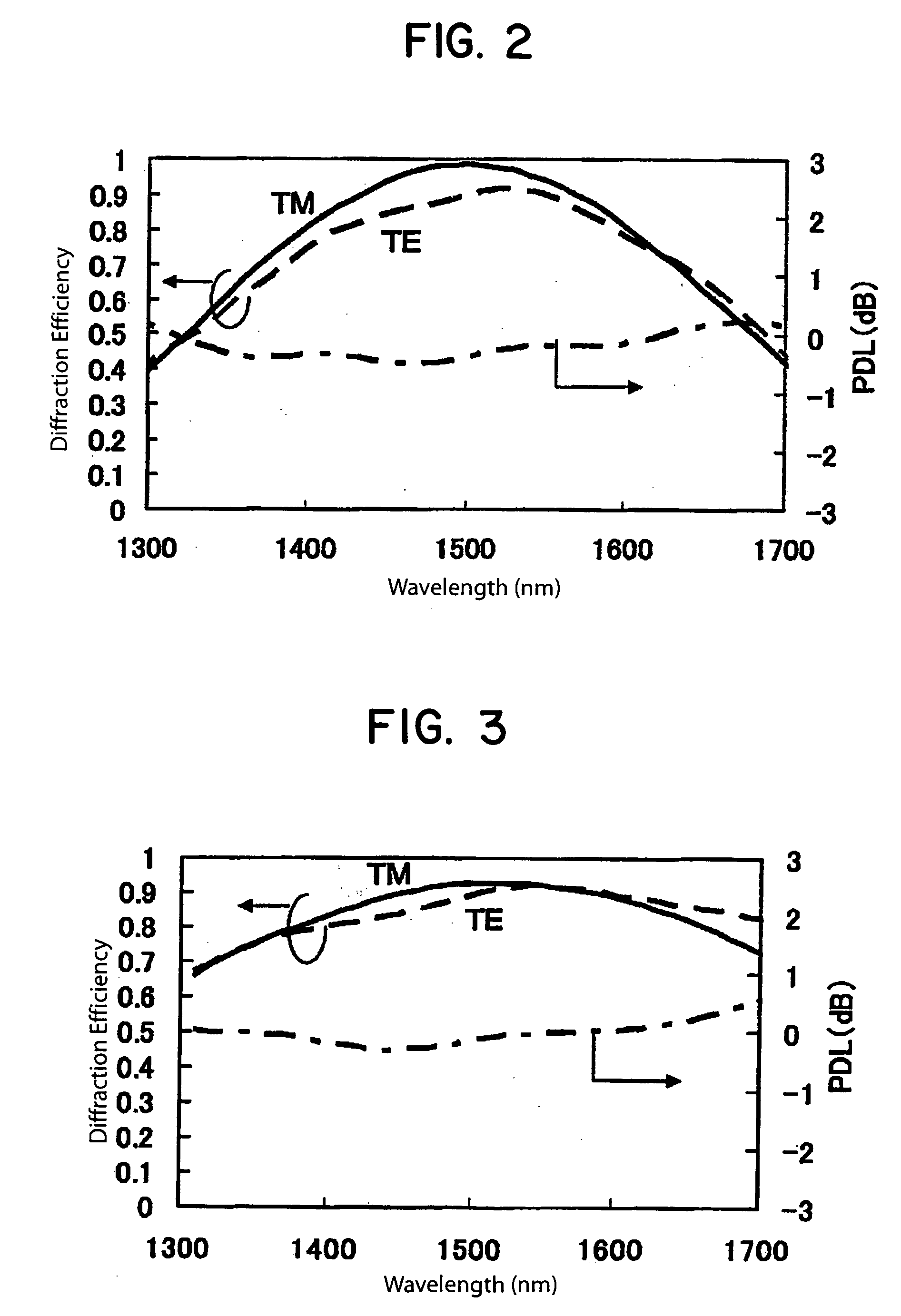Transmission type diffraction grating
a diffraction grating and transceiver technology, applied in the field of transceiver, can solve the problems of limited spectral range, less diffraction efficiency, range limitations, etc., and achieve the effects of low polarization dependent loss, high diffraction efficiency, and high resolving power and dispersion
- Summary
- Abstract
- Description
- Claims
- Application Information
AI Technical Summary
Benefits of technology
Problems solved by technology
Method used
Image
Examples
first embodiment
[0057] Using the method described above, a transmission grating was formed from a quartz substrate (1.45 index of refraction at 1500 nm wavelength) with 939 grooves per mm, a proportion of groove width d relative to groove pitch a (duty cycle D=d / a) of 0.8, and rectangular grooves of 5.3 micron depth.
[0058] A center wavelength of λc=1500 nm was used for this diffraction grating, and light was applied at an incidence angle of 45 deg from the side with the diffraction grating. The diffraction efficiency was measured in a system where the 1500 nm light had a −1 order diffraction angle of −45 deg.
[0059]FIG. 2 shows diffraction efficiency and polarization dependent loss (PDL) as a factor of wavelength for TM mode and TE mode. Good characteristics were obtained, with TE mode and TM mode both resulting in at least 80% in the 1500+ / −100 nm range, and a PDL of no more than + / −1 dB within the 1500+ / −300 nm range.
second embodiment
[0060] Using a method similar to that of the first embodiment, a transmission grating was formed from a quartz substrate with 800 grooves per mm, a duty cycle of 0.7, and rectangular grooves of 3.9 micron depth. A center wavelength of λc=1550 nm was used for this diffraction grating, and light was applied at an incidence angle of 38 deg from the side with the diffraction grating. The diffraction efficiency was measured in a system where the 1550 nm light had a −1 order diffraction angle of −38 deg. Good characteristics were obtained, as shown in FIG. 3, with the diffraction efficiency for both TE mode and TM mode being at least 80% in the 1550+ / −140 nm range, and the PDL being no more than + / −1 dB in the 1550+ / −250 nm range.
third embodiment
[0061] A TiO2 film was formed to a thickness of 1.4 micron on a quartz substrate. This TiO2 film was processed to form a transmission grating with rectangular grooves, 900 grooves per mm, and a duty cycle of 0.5. The grooves were etched to remove all of the TiO2 film, thus resulting in a groove depth of 1.4 micron identical to the thickness of the TiO2 film.
[0062] A center wavelength of λc=1550 nm was used for this diffraction grating, and light was applied at an incidence angle of 44 deg from the side with the diffraction grating. The diffraction efficiency was measured in a system where the 1550 nm light had a −1 order diffraction angle of −44 deg. Good characteristics were obtained, as shown in FIG. 4, with the diffraction efficiency for TE mode in a range of approximately 1500-1700 nm and TM mode in a range of approximately 1600-1800 nm being at least 80%, and the PDL being no more than + / −1 dB in the 1550+ / −250 nm range.
PUM
 Login to View More
Login to View More Abstract
Description
Claims
Application Information
 Login to View More
Login to View More - R&D
- Intellectual Property
- Life Sciences
- Materials
- Tech Scout
- Unparalleled Data Quality
- Higher Quality Content
- 60% Fewer Hallucinations
Browse by: Latest US Patents, China's latest patents, Technical Efficacy Thesaurus, Application Domain, Technology Topic, Popular Technical Reports.
© 2025 PatSnap. All rights reserved.Legal|Privacy policy|Modern Slavery Act Transparency Statement|Sitemap|About US| Contact US: help@patsnap.com



